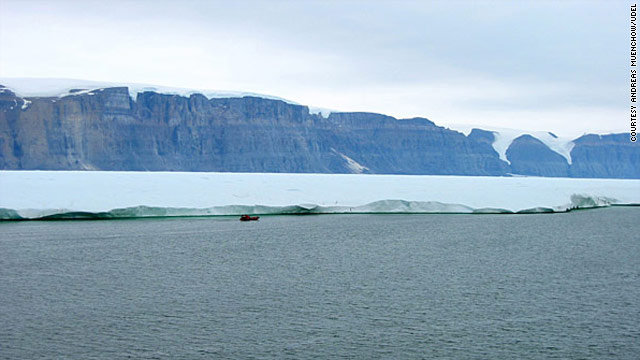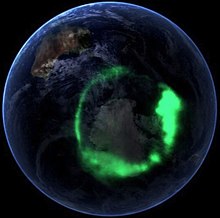Current standings:
A blog about math, physics, and teaching math and physics. With occasional other entries popping in from time to time.
Thursday, August 26, 2010
Baseball
Current standings:
Tuesday, August 10, 2010
Probability Questions
To make things easier, I'll take away some of the nuances of the game of backgammon--rolling doubles, or the fact that pieces have to be moved in certain ways--and just ask the crucial question:
If we take turns rolling dice and I have to accumulate 100 points and you have to accumulate 100 points, what's the probability that I get there first and "win"? Assume you roll 2 dice at a time, and its my turn.
An alternate question is how many turns will it take to accumulate 100 points. Answering this question suggests that the game should be over in 100 / 7 or probably 15 turns. But it could end as soon as 100/12 or 9 turns, or could take as long as 100/2 or 50 turns. What's the probability that it ends in 9 turns, 10 turns, 11 turns, etc....
But would knowing those probabilities help answer the original question--The probability that I get there before my opponent?
I'll say that these are questions I don't know how to answer, even though I love probability and have worked out many difficult calculations before -- perhaps a little more research will help.
Monday, August 9, 2010
Mor"jing" Routine CLICK ME
Click on the title to watch.
Online Group Work
https://docs.google.com/present/view?id=dhgjnt6w_1ff77wgcr
Podcasting Attempt
Saturday, August 7, 2010
Sea Levels Rise!

Thursday, August 5, 2010
Aurora Laura Rorealis
 the time, but this was an extraordinarily large pop. When these charged particles approach the earth, they get caught in our magnetic field and interact with atoms high in the atmosphere. Some atoms pick up electrons, others give them up, others move electrons from one location to another in the atom, each of which releases photons of different energies. A photon is a wave of electromagnetic radiation, which if at the right energies, our eyes detect as visible light, of different colors. This can often result in a beautiful arrangement of light and colors, often referred to as the Northern Lights, or the Aurora Borealis. (Aurora comes from the greek Goddess of dawn, and Borealis from the greek god of North winds).
the time, but this was an extraordinarily large pop. When these charged particles approach the earth, they get caught in our magnetic field and interact with atoms high in the atmosphere. Some atoms pick up electrons, others give them up, others move electrons from one location to another in the atom, each of which releases photons of different energies. A photon is a wave of electromagnetic radiation, which if at the right energies, our eyes detect as visible light, of different colors. This can often result in a beautiful arrangement of light and colors, often referred to as the Northern Lights, or the Aurora Borealis. (Aurora comes from the greek Goddess of dawn, and Borealis from the greek god of North winds). - They occur also in the south, called Aurora Australis
- They occur on other planets.
- They can be seen from space - the international space station has taken many beautiful pictures of it.
- The collisions occur about 50 miles above the earth, or roughly 1% of the radius of the earth above the earths surface.
- The auroras reach furthest toward the equators around midnight, so on any given day that would be the best time to try to observe them.
- Solar Flares, or "zit poppings" occur often -- once a week or so during good times and several a day during rough solar complexion. This varies in an 11 year cycle (why 11 years?!) and we are approaching a peak, 2013 should be a year of a lot of flares, and likely a lot more auroras visible. Perhaps the sun just ate a bunch of pepperoni pizza?

Tuesday, August 3, 2010
New Phone: 799-ROER

Got a new phone number today. I'm now using Google Voice, an application provided by the omnipotent Google. Basically, you sign up and pick a phone number (its a local 616 area code) and you can have it forward any calls to that number to any of several phones you have. So I have two phone numbers now -- my personal number and this new (616) 799-ROER.
Sunday, August 1, 2010
Boring Blogposts
Technology in Christian Education
The foundation of my beliefs is that this world was created by God. God is eternal, which means he has always existed and always will. God is all-powerful, and all-knowing, and deserving of all our worship. I believe God created mankind with that purpose in mind, that the things we do and say would glorify him.
I also believe that God is holy – he is pure and perfect, true love, truth and just. Man was created in that image, but man chose to live apart from God. As a consequence, there is evil, pain, and suffering in the world, and everyone now is born corrupted by sin and inherently living against God. Thankfully God loves us too much to let us stay apart from him, and he sent his son Jesus to save us and restore us to relationship with him. God calls us to know and live with him using two methods. First he uses general revelation, which is the nature all around us that points to him as creator. Second, he uses the special revelation that is his word, the Bible.
My role as a Christian educator is to help share this story, and reveal God to others, specifically to my students. As a math and science teacher, I tend to focus on general revelation, showing how the patterns and beauty and order we see in the world exhibits the properties of its creator. I use a lot of technology to do that. I show pictures of things I cannot physically bring into the classroom. I use microscopes and telescopes to see details in things that would otherwise be less glorious. I use databases and graphs to help show patterns. I even use technology like calculators to help teach other technologies like solving equations and quantifying things with numbers, all with the goal of describing the world as we see it.
There are lots of technologies that help teach via special revelation as well. The simple book binding machines that bring us our Bibles in the first place are a technology. More advanced tools are presentation tools like PowerPoint or word processors like Word that help present the ideas and stories of the Bible more effectively. There are videos that inspire us and instruments that help us sing the words of truth we get from the Bible. There are computers that help us communicate with others around the world and share our beliefs and discuss what the Bible teaches.
However, many of these technologies is also used by enemies of God to keep us away from him. Atheists can make presentations and propaganda using the same tools we can. Instruments can be used to sing songs that speak lies instead of the truth. Pornographers can create pictures and videos that tempt us to live for self instead of God. Telescopes used under the wrong assumptions can even lead some to believe this world is not created at all, but is itself eternal and infinite.
Technology is amoral – neither holy nor evil. It is similar to money, food, or even words for that matter. God has allowed us to have all these things and given us the choice in how to use them. We can either use them to honor him, or dishonor him. We can use them to help tell others about him to give him praise, or use them to communicate lies. We can even use them to glorify ourselves, or satisfy our own sinful desires, such as greed, pride, lust, or sloth. It is up to us to use the gifts and technologies he’s given us correctly.
And many times, just discerning the correct way to use our words, money, or technologies is an educational goal of its own.


